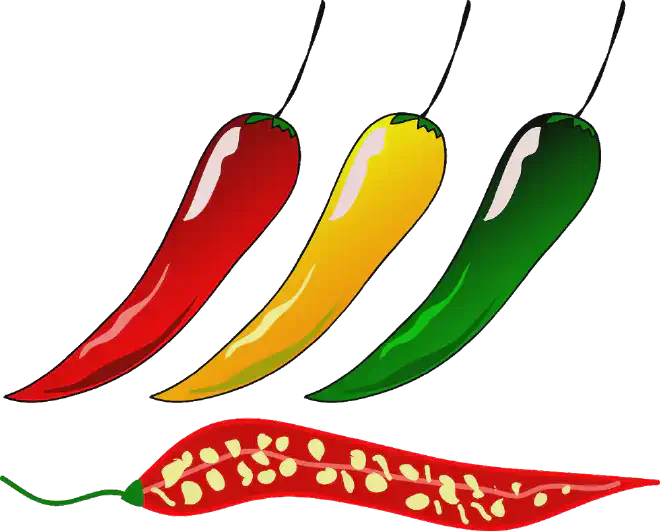

“The discovery of natural dietary compounds that reduce pungency presents promising opportunities for both the food and pharmaceutical industries,” said Devin Peterson, the corresponding author of the study.
Capsaicinoids are a group of compounds that produce the strong spicy sensation or pungency that comes with consuming chili peppers. The combined amount of capsaicin and dihydrocapsaicin in a pepper is used to calculate its heat intensity rating on the Scoville scale, ranging from zero Scoville Heat Units (SHU) for bell peppers to millions of SHU for the hottest peppers. However, some of these fruits have less heat than would be expected from their Scoville rating, which suggests that something else in the pepper influences that spicy sensation. So, Peterson, Joel Borcherding and Edisson Tello wanted to investigate multiple chili pepper varieties for potential spiciness suppressors.
Initially, they collected dry, powdered samples from 10 types of peppers, including Chile de árbol, Serrano, African bird’s eye, Fatalii and Scotch bonnet. The amount of capsaicin and dihydrocapsaicin in each was determined by liquid chromatography mass spectrometry. Then a trained panel of taste testers evaluated the intensity of the powders in tomato juice. Each mixture had 800 SHU (a level meant to be spicy but tolerable). Despite the same amount of capsaicin and dihydrocapsaicin in each tasting sample, the 10 peppers’ perceived heat intensities ranged significantly, suggesting other chemical constituents in the peppers impacted the sensation.
“These advancements could enable the customization of desirable spicy flavor profiles or lead to the creation of a household ingredient designed to tone down excessive heat in dishes — the anti-spice,” said Peterson. “Additionally, they hold significant medical potential in the design of (non-opioid) analgesic agents for pain management."
The study’s experimental approach was approved by the Ethics Committee of The Ohio State University.
- The paper Identification of Chili Pepper Compounds That Suppress Pungency Perception was published in the Journal of Agricultural and Food Chemistry. Authors: Joel Borcherding, Edisson Tello & Devin G. Peterson.

